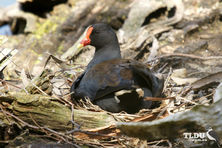
Shoppers Feedback:
Jan 17, 2017
Hello Ros,
I have now paid the invoice, but I would like to write to you just to say a big THANK YOU for getting me the Penguin!
The ChatterMate Penguin became a nice memory for me when I was in New Zealand, and I am so greatful to you for arranging so that I could have it! :-)
Thank you so much!!!!!!!!!!!
Regards,
Malin
Hi Ros,
Many thanks for your very kind email. I really appreciate your prompt reply!
I appreciate your advice regarding the decorations and customs. These are a gift for my daughter’s exchange student family so when she returns home on the weekend I will show her and see if she loves them as much as I do!
Thanks so very much again - I am truly grateful for your kind assistance.
Kind Regards
Bernadette
Ros,
Thanks again for the great customer service. It's a refreshing change!
Best regards,
Trevor
Hey Roz,
Thank you for your emails. Just loved my first order. The cute little Aussie bush critters are going to be used for an office Christmas decoration. My colleagues also liked them and talked about making an order to your site. I'll send you a photo when completed.
I'll be ordering more to send to my daughter's host family in America.
Fabulous service from you.
Kind regards,
Michelle
Thankyou. Order arrived today. One very happy grandson with his new beastly binoculars.
Regards,
Irene
- Home
- Wild Wonders
- Shop
- Aromas of Australia
- Australian Made
- Books
- Book Marks
- Christmas Decoration Sale
- Christmas Decorations
- Clocks
- Drink Holders
- Garden & Outdoor
- Gift Wrapping & Cards
- Home & Giftware
- Jewellery
- Keyrings
- New Products
- Pencils & Pen Holders
- Photo Frames
- Plush Toys
- Plush with Sound
- Sheepskin Rugs
- Stationery
- Stone Carvings
- Toys & Games
- Travel Goods
- Wedding
- Wild Figurines
- Wildlife Safety Products
- Wind Chimes
- Wine Charms
- View All Products
- Wildlife
- Australiana
- Explore
- Contact Us

Quick Facts
| Length: | 38 cm |
| Height: | - |
| Weight: | - |
| Colour: | Dark grey-black with white undertail. Red bill with yellow tip |
| Habitat: | Wetlands - swamps, rivers, artificial waterways. |
| Food: | Algae, water plants and grasses, seeds, fruits, molluscs and other invertebrates. Carrion and the dr |
| Predators: | - |
| Status: | Secure in NSW, QLD, SA, VIC & WA. Not Present in NT and TAS |
The Dusky Moorhen is a medium-sized, dark grey-black water bird with a white undertail. It has a red bill with a yellow tip and a red facial shield. Young birds are much duller and browner than adults, with a greenish bill and face shield.
Two other water hen species are similar to the Dusky Moorhen but can be easily distinguished. The similarly-sized Eurasian Coot, has a white bill and face shield and a red eye. The Purple Swamphen is much larger and has a distinct purple-blue colouring.
The Dusky Moorhen is found from Indonesia through New Guinea to Australia. It is widespread in eastern and south-western Australia, ranging from Cooktown to eastern South Australia and in the southern corner of Western Australia.
The Dusky Moorhen is found in wetlands, including swamps, rivers, and artificial waterways. It prefers open water and water margins with reeds, rushes and waterlilies, but may be found on grasses close to water such as parks, pastures and lawns.
The Dusky Moorhen feeds in the water and on land on algae, water plants and grasses, as well as seeds, fruits, molluscs and other invertebrates. It will also eat carrion (dead animals) and the droppings of other birds. It does not dive when feeding; its tail is always visible above the water when upended.
During breeding season, the Dusky Moorhen forms breeding groups of two to seven birds, with all members defending territory, building nests and looking after young. The shallow platform nests are made of reeds and other water plants over water, among reeds or on floating platforms in open water. Two or more females will lay their eggs in the same nest and all members of the group help to incubate the eggs and feed the young.
The Dusky Moorhen has been favoured by artificial water sources such as dams, ponds and lakes in parks and gardens and associated grassy areas. However, wetland drainage in other areas may have negative impacts.
Last Updated: Wednesday 8th January, 2014
BUSH e-TELEGRAPH
Signup for our monthly newsletter the "e-Telegraph"
Quick Links
Home | The Beginning | About The Land Down Under | Wild Wonders | Advertise on Wild Wonders | Christmas Decoration Sale | Christmas Tree Decorations | Drink Holders | Plush with Sound | Stone Carvings | Wildlife Wine Charms | Freebies | Australian Wildlife | Help Our Wildlife | Australiana | Photo of the Month | Explore The Land Down Under | Contact Us | Legal Notices

